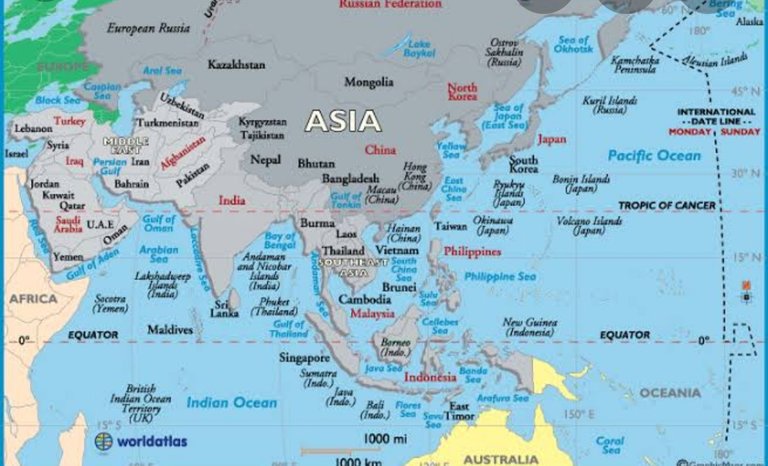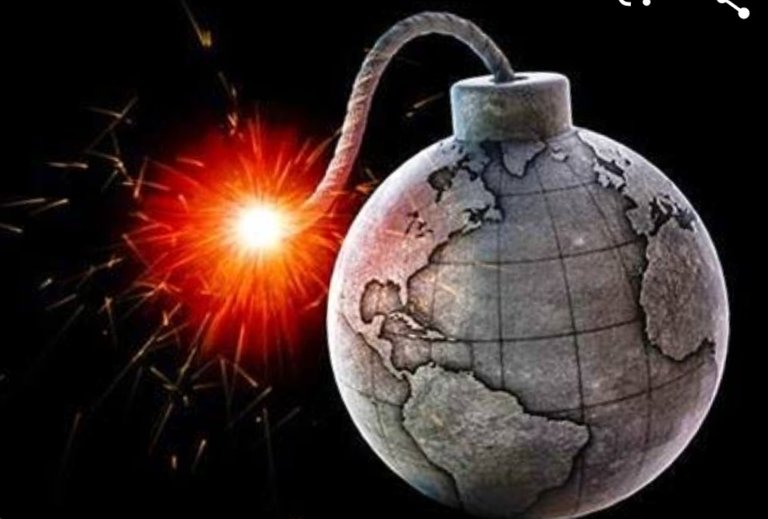
Introduction
At its core, nuclearism is the trust that nuclear weapons and nuclear strength are crucial forms of progress that in the proper fingers will guard the peace and in addition the human condition. Nuclearism is a unsafe ideology — as unsafe as the applied sciences it has unabashedly and unreservedly promoted. In this trust system, “the proper hands” have usually been synonymous with one’s very own country, and “to further the human condition” has typically been synonymous with gain to oneself, one’s u . s . or one’s corporation. The key factors of nuclearism are:

- The belief that nuclear weapons maintain the peace, and are a imperative evil. 2. The trust that nuclear power is a safe, dependable and less expensive source of energy, and that the nuclear power industry is an absolute good. 3 The belief that, notwithstanding the enlargement of the nuclear energy industry, the diversion of nuclear substances from the nuclear gasoline cycle to navy uses can be prevented.
The ideology and the applied sciences it has supported have created first-rate risks for all lifestyles on Earth. While the risks posed by using nuclear weapons are potentially more immediately and cataclysmic in scope, the insidious dangers posed through nuclear power reactors and their radioactive waste products are now already harming humankind, other types of life, and the environment and this risk will proceed for heaps of generations. Believers in nuclearism, to the extent that they well known these dangers, argue that nuclear technology brings advantages that extra than compensate for its inherent dangers.
The risks of nuclear technological know-how may additionally be summarized as follows:
Nuclear deterrence is solely a theory. It might also fail inflicting many instances extra casualties and suffering than had been experienced at Hiroshima and Nagasaki. 2. Nuclear weapons may additionally be used via accident or miscalculation as nicely as by using intention. The nuclear destruction of one town with the aid of one bomb may want to end result in hundreds of thousands of deaths and casualties. A large-scale nuclear change could end result in the annihilation of humankind and most different varieties of life on Earth. three Nuclear weapons or the materials for making them may additionally discover their way into the fingers of terrorists or irrational leaders of countries. four Nuclear power reactors are concern to catastrophic disasters such as happened at Chernobyl in the former Soviet Union and almost took place at Three Mile Island in the United States. Such screw ups could show up as a end result of accident, human error, terrorist activity, or destruction by means of an enemy in time of war. 5. The spent fuel storage swimming pools positioned at nuclear power reactors are specifically susceptible to the release of radioactive substances as a result of terrorist or military attack. 6. Accidents occurring at some stage in the transportation of nuclear substances via highway, railway, ship, or air could end result in hazardous releases of radioactive materials. 7. No long-term means of storage of radioactive waste substances presently exists to protect the surroundings and human fitness in opposition to the dangers of radiation release.
Despite these dangers, the proponents of nuclearism have succeeded in many international locations in acquiring giant amounts of public funding to help the development, testing, deployment, and renovation of nuclear weapons and/or the development and subsidization of the nuclear strength industry. The expenses of nuclear technological know-how have included:Over $8 trillion spent on nuclear weapons and shipping systems by means of the nuclear weapons states over the past half century. 2. The diversion of generations of scientists and technologists to work on weapons of mass destruction as an alternative than on initiatives of effective price to humankind. 3 The massive illness of the environment by using radioactive pollutants created in the procedure of constructing and checking out nuclear warheads over a fifty year period. Cleanup expenses are estimated at hundreds of billions of dollars, and it is understood that some areas of contamination will in no way be appropriately restored to protected use. (In the United States, such areas are referred to as “national sacrifice zones.”) 4 Nuclear power reactors, once thinking to be relatively less expensive to build, now cost some $5 billion per a thousand megawatt reactor. This cost has priced nuclear reactors out of competitiveness in the United States regardless of full-size authorities (that is, taxpayer) subsidies. 5. Radioactive wastes generated through the navy and nuclear strength industry will need to be stored to prevent environmental pollution and subsequent health troubles for tens of heaps of years. The bulk of this burden will fall to future generations.

In this paper, I will assessment the improvement of nuclearism in the West, its roots in navy technology, its linkage to commercialism, attempts to place a boundary between the military and peaceable makes use of of nuclear technology, and the spread of nuclear weapons to Asian countries. I will then overview the Non-Proliferation Treaty and its reference to nuclear electricity as an “inalienable right,” return to the nuclearist view that nuclear weapons are a indispensable evil and nuclear energy an absolute good, and discuss the want for new thinking about nuclear technologies, as referred to as for through Albert Einstein. I will then assessment nuclearism in Asia, international nuclearism, and subsequently the urgent need and necessary possibility that now exists to obtain a world free of nuclear weapons.
Nuclearism Is a Western Ideology
Nuclearism is an ideology that originated in the West. The predominant proponents of nuclearism have been the United States, Britain, France, and the former Soviet Union (now changed with the aid of Russia). The “East-West” warfare of the Cold War described the division of Europe with Western Europe and the United States on one aspect of the divide, and Eastern Europe and the former Soviet Union on the different side. Both sides have been proponents of nuclearism. Both facets believed that their nuclear deterrent forces averted nuclear hostilities and thereby stored the peace. Despite a lack of goal evidence that there used to be a causal connection between nuclear arsenals and the absence of a nuclear war, each aspect credited its increasing nuclear arsenal with retaining the peace. To underline this, the United States at some point of the Reagan presidency named some of its powerful nuclear armed missiles “peacekeepers.”
Both nuclear weapons and nuclear electricity plant life are products of the West. Nuclear weapons, nuclear power, and the ideology of nuclearism developed in the West and have unfold during the world.
Nuclearism Originated As a Military Technology
Nuclear weapons had been developed through the United States with the aid of European refugee scientists at some stage in World War II. The initial impetus for the U.S. effort was the fear that the Germans might increase similar weapons, and that these weapons would be imperative to deter the Germans from using theirs. However, by using the time that the first U.S. nuclear weapons were developed, the Germans had already surrendered without having succeeded in growing a nuclear weapon.
The first U.S. nuclear weapon test took region on July 16, 1945 at Alamogordo, New Mexico. The conflict in the Pacific was nonetheless going on at that time, although the United States was once aware that the Japanese had been looking for to negotiate phrases of surrender.(1) Just three weeks after the initial profitable test of the weapon, it used to be used at Hiroshima, Japan on August 6, 1945, and three days later at Nagasaki, Japan. At Hiroshima some 90,000 persons, in general civilians, had been killed immediately, and a total of some 140,000 men and women died as a result of the bombing by means of the end of 1945. At Nagasaki some 40,000 persons, again more often than not civilians, were killed immediately, and a whole of some 70,000 persons died as a result of the bombing through the end of 1945. The suffering of the survivors, the hibakusha, continues to the present. The humans of Japan were the first victims of this powerful new technology.
The selection to use the newly developed weapon towards the Japanese used to be made with the aid of U.S. President Harry Truman. When Truman acquired affirmation of the “success” of the use of the nuclear weapon dropped at Hiroshima, he is stated to have said, “This is the biggest day in history.”(2) One can imagine that the response to the devastation and mass killing of civilians was viewed particularly otherwise in Japan.